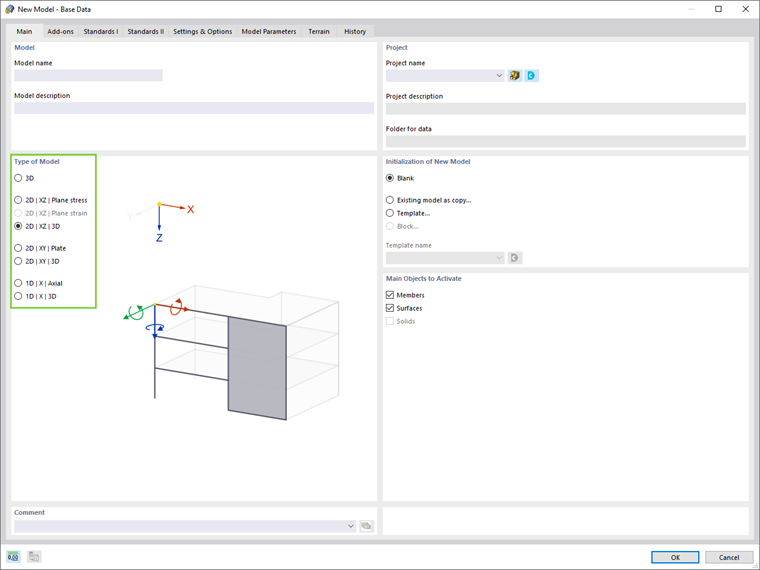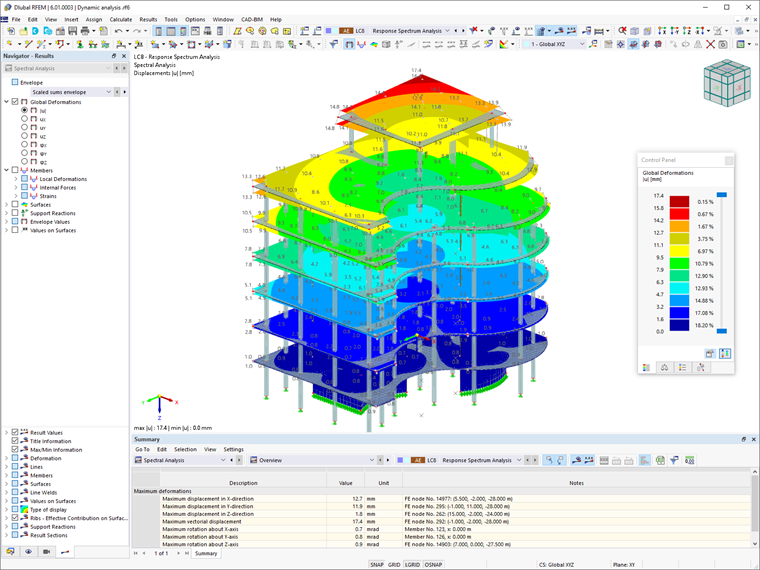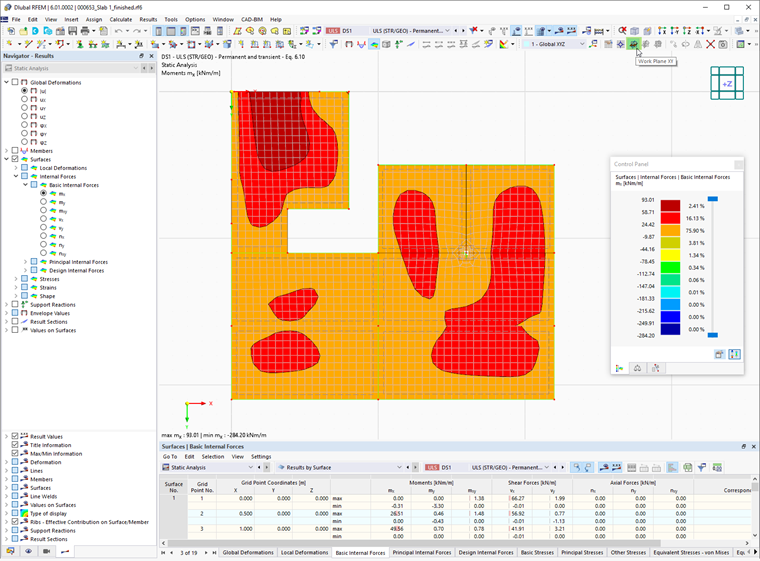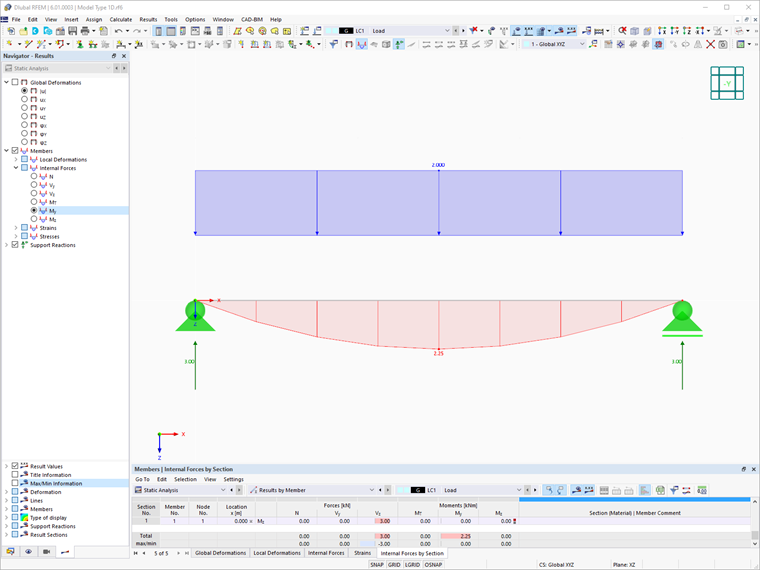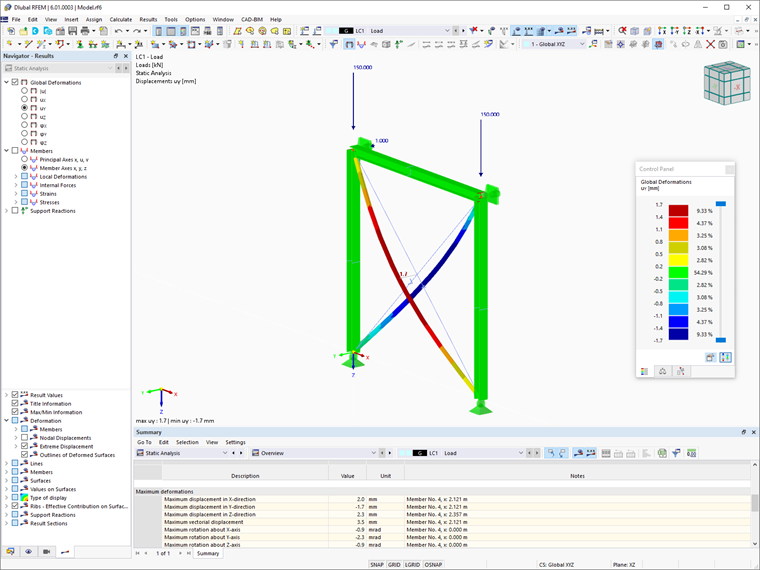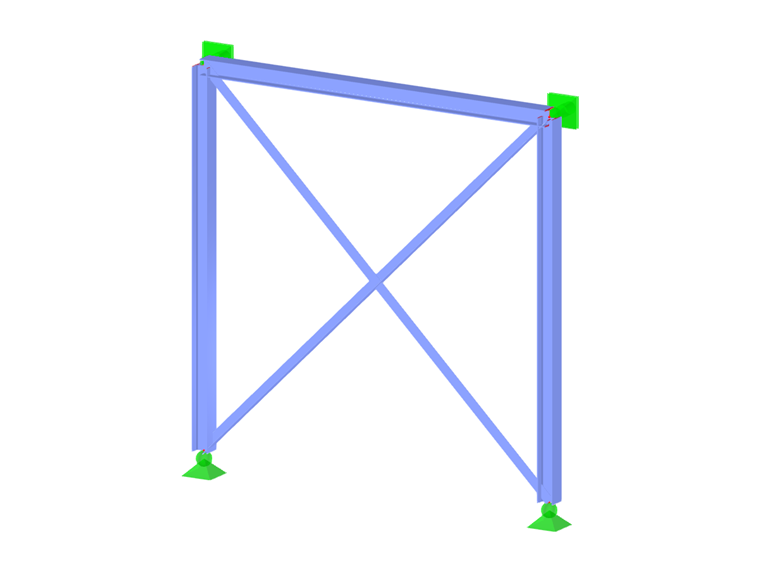The model types available in RFEM 6 are shown in Image 1.
3D Model Type
The first model type is based on the consideration of all three dimensions of a structure. In a spatial 3D model type as displayed in Image 2, the model has six degrees of freedom, and all three work planes (XY, XZ, and YZ) are available.
The advantages of 3D modeling are manifold. First and foremost, not all buildings have a regular grid, which limits the possibility of dividing them into substructures with clear and controlled load transfer. Second, the evaluation of the global stability failure on the entire model is superior with respect to a planar 2D model.
Consideration of spatial mode shapes and accidental torsional loads as well as superposition of the seismic excitations in the X and Y directions also favors three-dimensional modeling for seismic or other dynamic analysis. In regard to modern planning methods, 3D models are essential for the use of Building Information Modeling.
2D Model Types
RFEM 6 provides the option to simplify structures and work with planar (2D) models. The advantage of these model types is related to the reduced input effort resulting from limited coordinates and degrees of freedom. Since a 2D model can be drawn in only one plane and has three degrees of freedom, modeling and calculation are less time- and size-consuming.
The use of model type 2D|XZ|Plane Stress is recommended for planar frame structures if the loads are acting in the direction of the surface plane, whereas type 2D|XY|Plate is recommended for planar plate structures stressed perpendicularly to the surface plane, such as the one in Image 3.
Hence, the first designation in the model type (2D) stands for the input of the system, while the second one (XZ/XY) stands for the plane in which the system is modeled. It is also possible to choose 2D model types that allow modeling in one plane, but with a three-dimensional load application and resulting 3D internal forces and deformations.
1D Model Types
In RFEM 6 it is also possible to work with a one-dimensional model type where structures are represented by a single axis. This model type allows modeling solely in a 1D environment; thus, the input effort is reduced to an even greater extent. Nevertheless, RFEM 6 offers model type 1D|X|3D, in which a three-dimensional load application and resulting internal forces are possible.
Practical Example
The use of a 2D|XZ|3D model type in RFEM 6 is demonstrated on a steel bracing, as displayed in Image 5. The 2D braced frame to which two nodal forces of 150 kN are applied in the Z direction is modeled in plane XZ. In addition, 1 kN of load in the Y direction is present on the structure, which implies the need to consider out-of-plane deflections as well.
Plane modeling in general does not allow this consideration; however, model type 2D|XZ|3D in RFEM 6 provides the possibility to consider all deformations resulting from the applied load. Therefore, even though the modeling is in a 2D environment, the resulting internal forces and deformations are three-dimensional.
